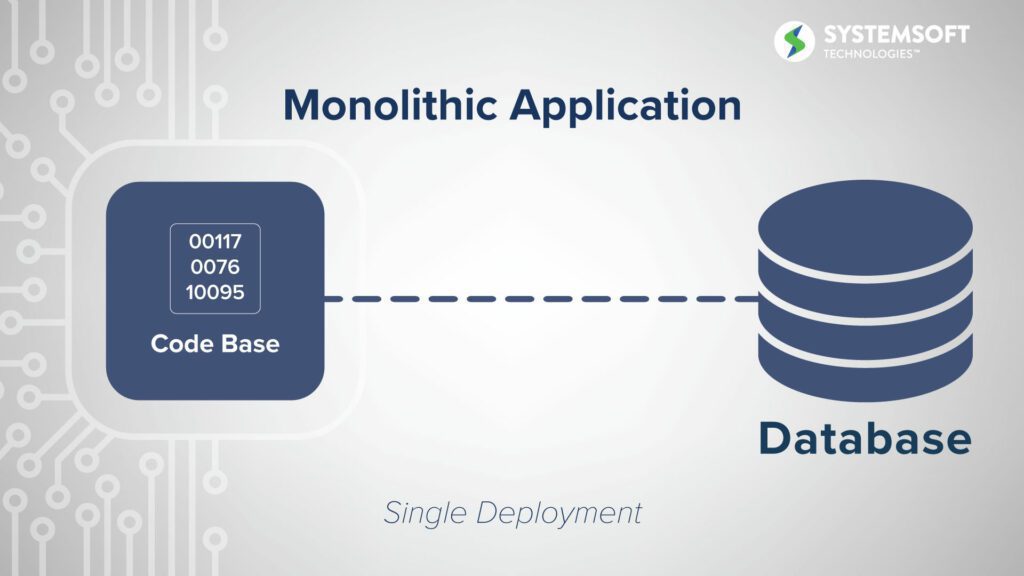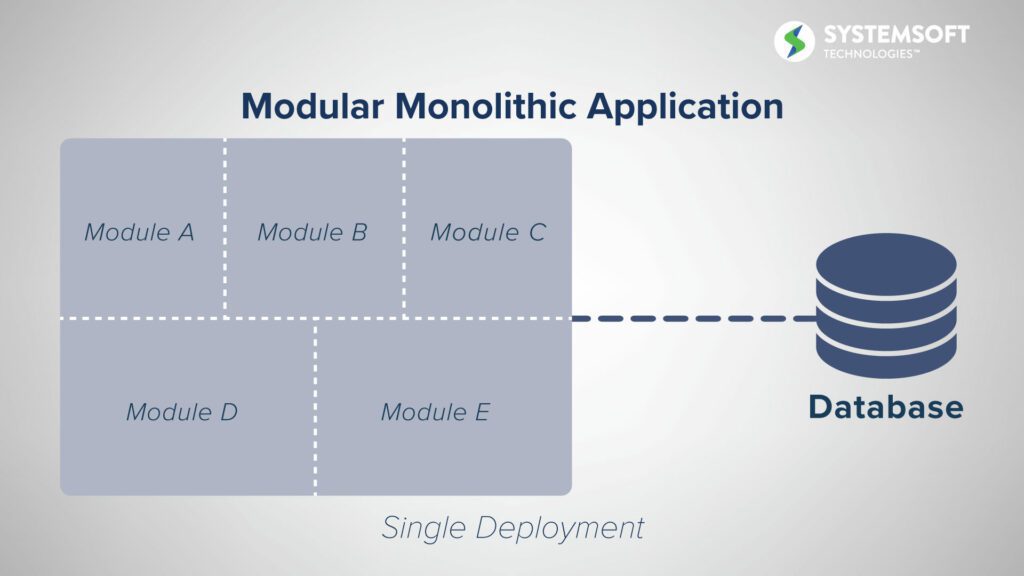Why Microservices and Why Now?
The technological landscape has massively evolved during the past 30 to 40 years. In a connected world, web presence has become mandatory for organizations. As the buildout of web applications catering to these needs evolved, the application architectures also evolved to better meet business needs.
One such latest technology trend is microservices. Why microservices web apps, and why now are the questions we will answer.
Current Challenges in Web App Development
Traditionally, organizations have focused on developing applications to solve their business problems. As the internet and its access has become more ubiquitous, web applications proliferated. In the process, the major goal was to develop necessary functionality rather than address any major concern about its scalability, extendibility and maintainability and future growth.
As organizations have grown, added business requirements have poured in. And more functionalities have been added to the same application codebase. As time has passed, applications have become large and monolithic, making it difficult to maintain, scale and extend functionality.
Over time, this has hindered further growth for organizations because of these inherent challenges. And this has severely affected getting products to market.
In the first of this multi-part series about microservices, let’s understand the fundamental concepts of monoliths, macroservices and microservices.
What Is a Monolith?
A business application must deal with user interface, business logic and data storage and retrieval. A monolithic application is designed to perform all functionality needed in a non-modular fashion. This makes all application focus areas tightly coupled.
In many situations, such monolithic applications have grown too big to be effectively managed. They’re also too expensive to enhance and fix. Any change in application functionality may introduce unintended consequences.
Monoliths are usually limited to one technical stack. This makes it difficult to evolve or choose tech stacks most suitable for specific purposes. Monoliths also make it difficult to integrate with third-party tools. In many experiences, this has severely limited or made it outright impossible to roll out new features.
Most legacy business applications are implemented as monoliths. These monolith applications have everything processed by one codebase or tightly coupled codebases. The application holds all the logic and data objects and uses the same storage and backend systems. There may be a few deviations from these conceptual building blocks. But these are considered under the same analogy as monolithic applications.
Monolithic applications are suitable for small applications. However, as applications grow large and/or frequent changes are needed, it’s challenging to effectively meet business demands.
What Are Typical Monolithic Application Challenges?
- Difficult to maintain
- Complicated to extend
- Problematic to deploy
- Complex to scale with demand
- Unmanageable availability
- Unreliability
What Are Types of Monoliths?
- Conventional Monolith
Monolith applications come in various compositions. Most times, monoliths are a single deployment, which is called a conventional monolith. This is when all the code is packaged in a single-process deployment. The code has no separation of concerns in conventional monolithic architecture. And it spans all functional boundaries and dependencies. It’s difficult to break into separate functions.

- Modular Monolith
Unlike the conventional monolith, modular monoliths are composed of modules with a bounded context by segmenting code into individual features. The modules are interconnected and interdependent. But they are deployed as a single, monolithic application.

- Distributed Monolith
On the other hand, a distributed monolith is a system built as a composition of services. But they still have interdependencies. In general, people misunderstand the difference between distributed monoliths and microservices.
Typical features in a distributed monolith include services that:
- Are tightly coupled
- Don’t easily scale
- Can be overly chatty
- Share resources, such as a database
- Distribute codebase or testing infrastructure
While many organizations have run with monolithic architecture, some have sliced monoliths into multiple, smaller monoliths. This has paved the way for macroservices.
What Is a Macroservice?
The term “macroservice” isn’t as common as microservices in the tech world. In a broader perspective, macroservices can be described as large or unwieldy microservices, services from the SOA (service-oriented architecture) or partial monoliths.
Generally, macroservices are equivalent to monoliths. It’s just that they are primarily large monoliths decomposed into smaller monoliths. Macroservices and microservices may have commonalities. However, there are two basic differences.
- A macroservice, unlike microservices, shares the same datastore with other monolithic applications or other macroservices.
- A macroservice, unlike microservices, commonly supplies access to multiple data objects and processes.
These differences allow macroservices to have the same issues as monolithic applications. Especially for scalability and maintainability.
The only beneficial features of macroservices, unlike monolithic applications, are they have fewer data objects and interactions. Hence, because of the reduced complexity compared to a monolithic system, macroservices can be an intermediary step while migrating a monolithic application into microservices.
What Is a Microservice?
A microservice is defined as a collection of small services existing in an ecosystem. These services work independently to carry out their responsibilities.
What Features Do Microservices Have?
- Highly manageable and demonstrable
- Self-contained and decoupled
- Portable
- Based on business functionality
Microservices aren’t constrained by language development or platforms. They can be developed using different languages like .NET, Java, Python, PHP and others.

Key Advantages of Microservices Web Apps
Microservices have the following inherent advantages over monoliths or macroservices.
a. Easy deployment. Each business domain, functionality or module is independently deployable and scalable, depending on demand. The entire application doesn’t need deployment for functionality to work.
b. Fewer dependencies. As the microservice modules are isolated and survive independently, they are less dependent on or independent of other modules.
c. Early defect identification and recovery. As microservices web apps are broken down into small, functional features, failures in the individual services are easily identifiable, with the help of monitoring tools. This leads to speedy recoverability.
d. High fault tolerance and fewer risks. Any failure of a microservice is only limited to that service. It doesn’t affect others, is less risky and therefore, helps with high tolerance goals.
e. Simple third-party integration. Because of well-defined interfaces, microservices are amenable to simple integration with third-party applications and services.
f. Polyglot system. Microservices aren’t constrained by the development environment or platform. These can be developed using any programming language, such as Viz, .NET, Java, Python, PHP and others, and deployed on Windows, Linux and other operating platforms.
g. Scalability. With the advent of cloud services and virtualized infrastructure, scaling infrastructure up or down, according to demand, becomes easy. Because microservices can be scaled independently, you have fine-grained access control of underlying infrastructure usage. This leads to fine-grained control over the cost of infrastructure required to run the applications.
The key to success with microservices lies in their proper orchestration to take advantage of the fine-grained control described above. That orchestration capability is now widely available for organizations through technologies like Docker, Kubernetes and streaming analytics offered by major cloud service providers.
With all the above-listed benefits, if you need scalability, reliability, availability, efficient infrastructure cost management and must serve customers where they are, it’s imperative to leverage microservices today.
Conclusion
Organizations have grown their application portfolios into large-sized, monolith software. They’ve transitioned these big monoliths (largely considered macroservices) into smaller monoliths, with reduced complexity and risk.
However, with technological advancements and emergence of microservice architecture, the stakes have been upped for reliable, always available, scalable, cost-effective software. As such, if you need to build cloud-scale web applications, microservices architecture is the answer.
A trusted partner like System Soft Technologies can help you make informed decisions about how to move your monolithic workloads to microservices. System Soft experts use a rich suite of development tools and agile methods to develop your applications in a prompt and cost-efficient manner.
If you have questions or want to talk to one of our experts, schedule a free consultation today.
System Soft supports all types of applications. For more information, click here.
About the Author: Anil Kumar
Anil is an experienced management and technology professional at System Soft Technologies. He has decades of extensive experience working on Microsoft, .NET, cloud and mobile technologies. He has excellent analytical, technical and communication skills. He’s held various positions in executive, managerial and technical roles at elite organizations.
